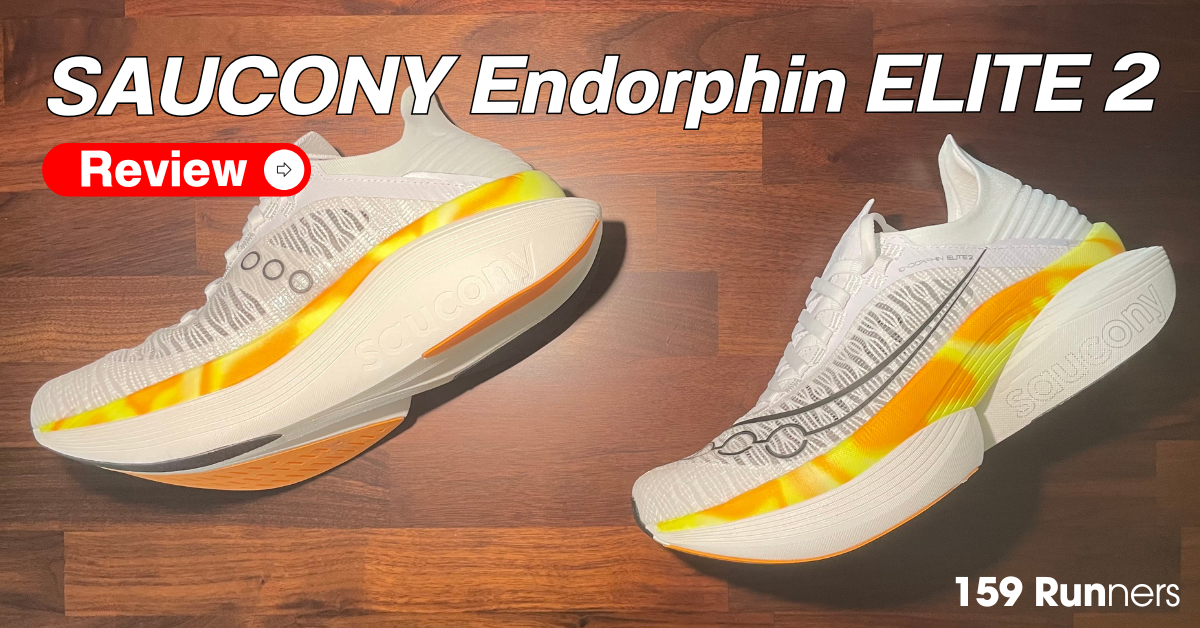Saucony Endorphin Elite 2
Personally, I think the definition of the Saucony Endorphin Elite 2 is “A shoe with a unique character, excellent fit, ultimate comfort, and maximum softness with bounce that’s different from anything else. It’s soft yet responsive, but lacks stability for sure. For runners with solid form who crave a plush, responsive ride, this is the ultimate secret weapon. I firmly believe it’s one of the top 3 racing super shoes on the market right now.” 🔥
Almost two years after the release of the first model, Saucony Endorphin Elite makes a comeback in its second version, designed for the fastest races. This model sits at the top of Saucony’s lineup, above the slightly heavier Endorphin Pro 4. While the first version was well-received, I have to admit I wasn’t a big fan of the original Endorphin Elite. So, I was curious and hopeful that Saucony would do something amazing with this second iteration. After waiting for a long time, I finally tested it thoroughly!
The IncrediRun foam is a game-changer and will redefine running shoes for years to come. It’s currently the softest and most responsive foam among top-tier racing shoes. Many brands use the “marshmallow” analogy to hype their midsoles, often exaggerating, but with the Elite 2, you genuinely feel like you’re running on marshmallows—it’s the softest super shoe foam out there. Its character is truly unique, unlike anything else, and hard to describe without trying it yourself.
However, such softness comes with a price. It’s one of the least stable shoes out there. It’s not for everyone. Not ideal for training, for those with flat feet, or for heavy heel strikers!
Despite its flaws, I couldn’t help but fall in love with the Saucony Endorphin Elite 2. The plush, bouncy ride is unreal, making every run feel joyful and fatigue-free. The more I used it, the more I loved it. For runners who can handle its softness and instability, this shoe will win you over. For those with strong form who already lean toward soft, responsive shoes, this is the ultimate secret weapon. ❤️
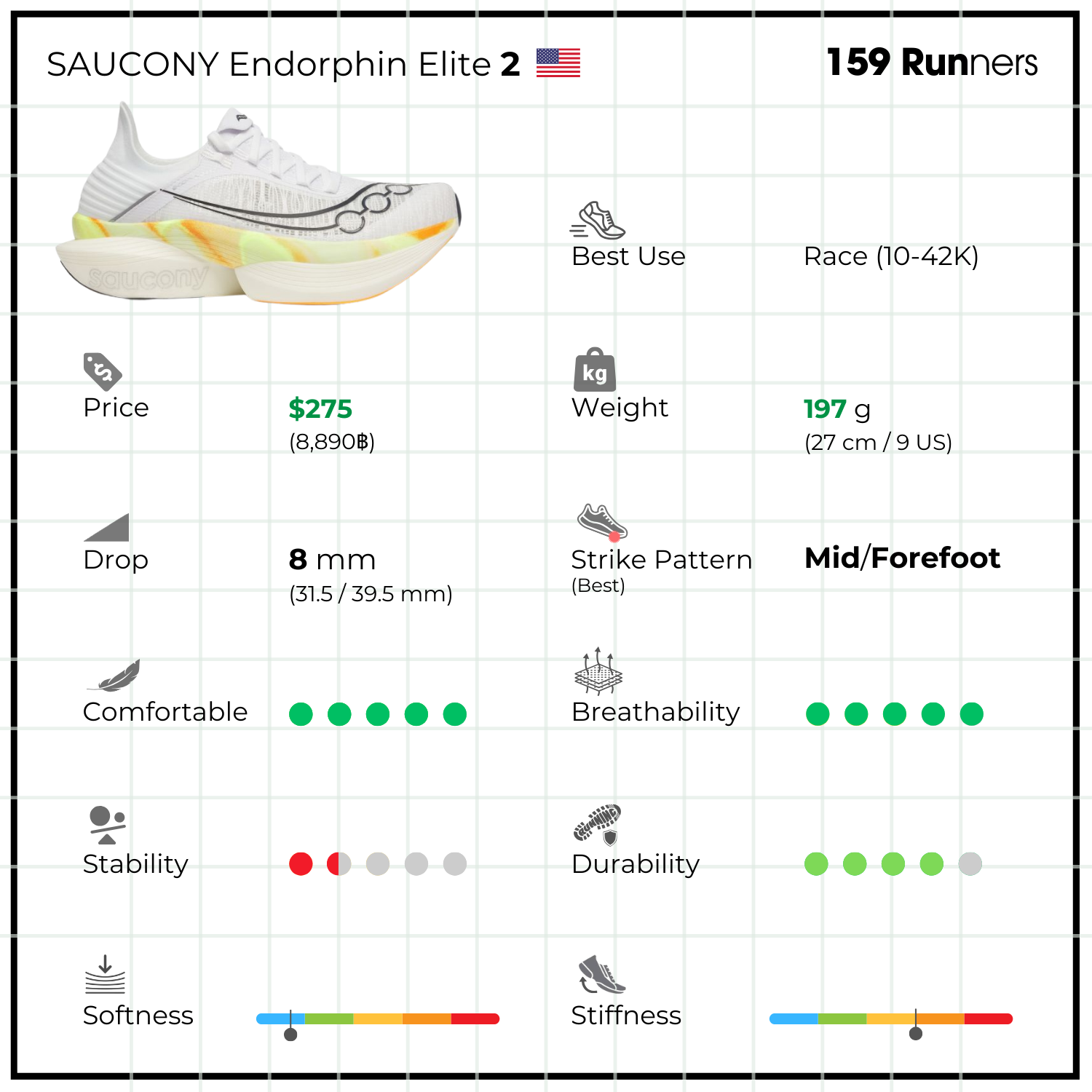
Overview (Design & Specs)
Design: This one really comes down to personal taste. For me, the shape feels a bit strange; it’s lower than other models and has a unique shape that makes it seem less cohesive. To put it simply, it’s not ugly, but it looks a bit too unconventional for my liking. If you’re looking for a sleek design, it can’t quite compete with a couple of other big brands.
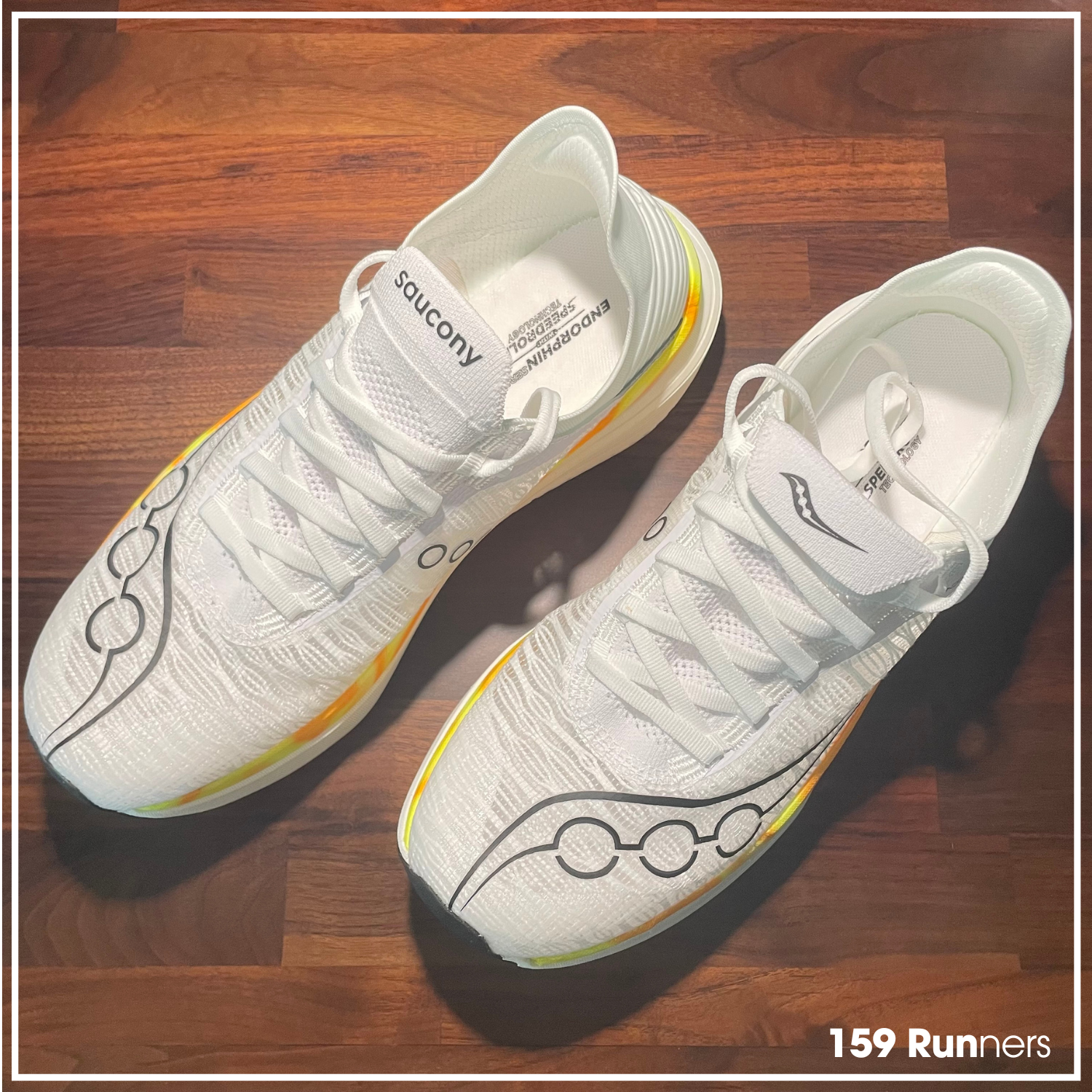
Weight: 197-199 grams (size 9 US, men’s), which is quite light.
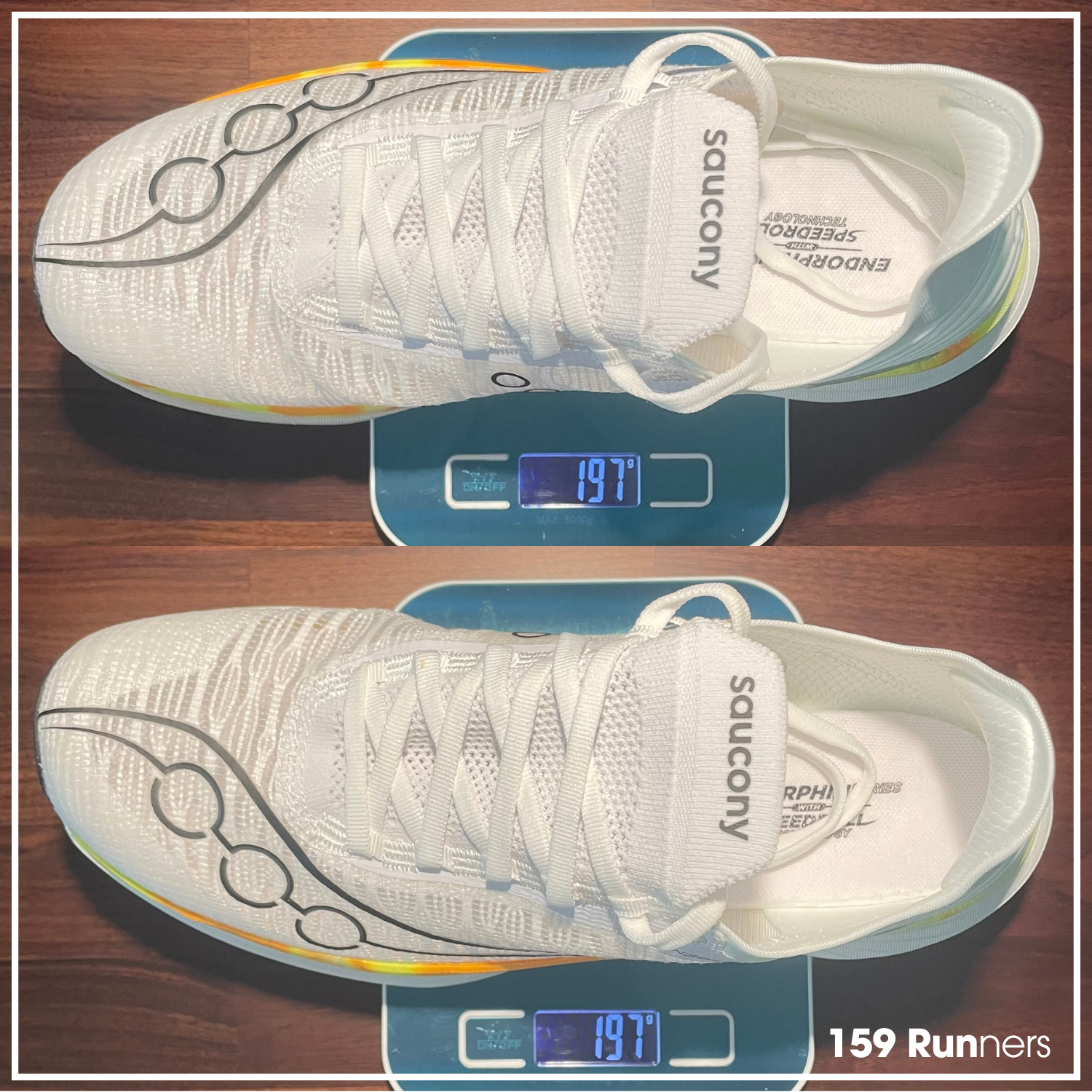
Sizing: If you have a regular foot shape and plan to use them for shorter runs like 5–10K, you might be okay with your regular size. However, for most Asians or those with wider feet, or if you plan to use them for long-distance running (21–42K), I recommend going half a size up. This will help reduce pressure on the toes and prevent swelling during long runs.
👉 Example: My foot length is 25.5 cm with a slightly wider forefoot (2E). For the regular size, my foot length would be 26.5 cm, but since I have a wider forefoot and focus on long runs, I go up 0.5 cm to 27 cm (9 US). This gives me a perfect fit, and I feel that if I stick to my regular size, my middle toes would be cramped.
Stack Height: 31.5 mm (forefoot) / 39.5 mm (heel)
Drop: 8 mm (heel-to-toe drop)
Upper: The upper is very well-made—light, thin, and almost see-through, with a knit-mesh material that offers excellent breathability and a snug fit without needing to tie the laces too tight. The semi-bootie construction helps lock in the midfoot and heel better than the first version, especially during turns or speed changes.
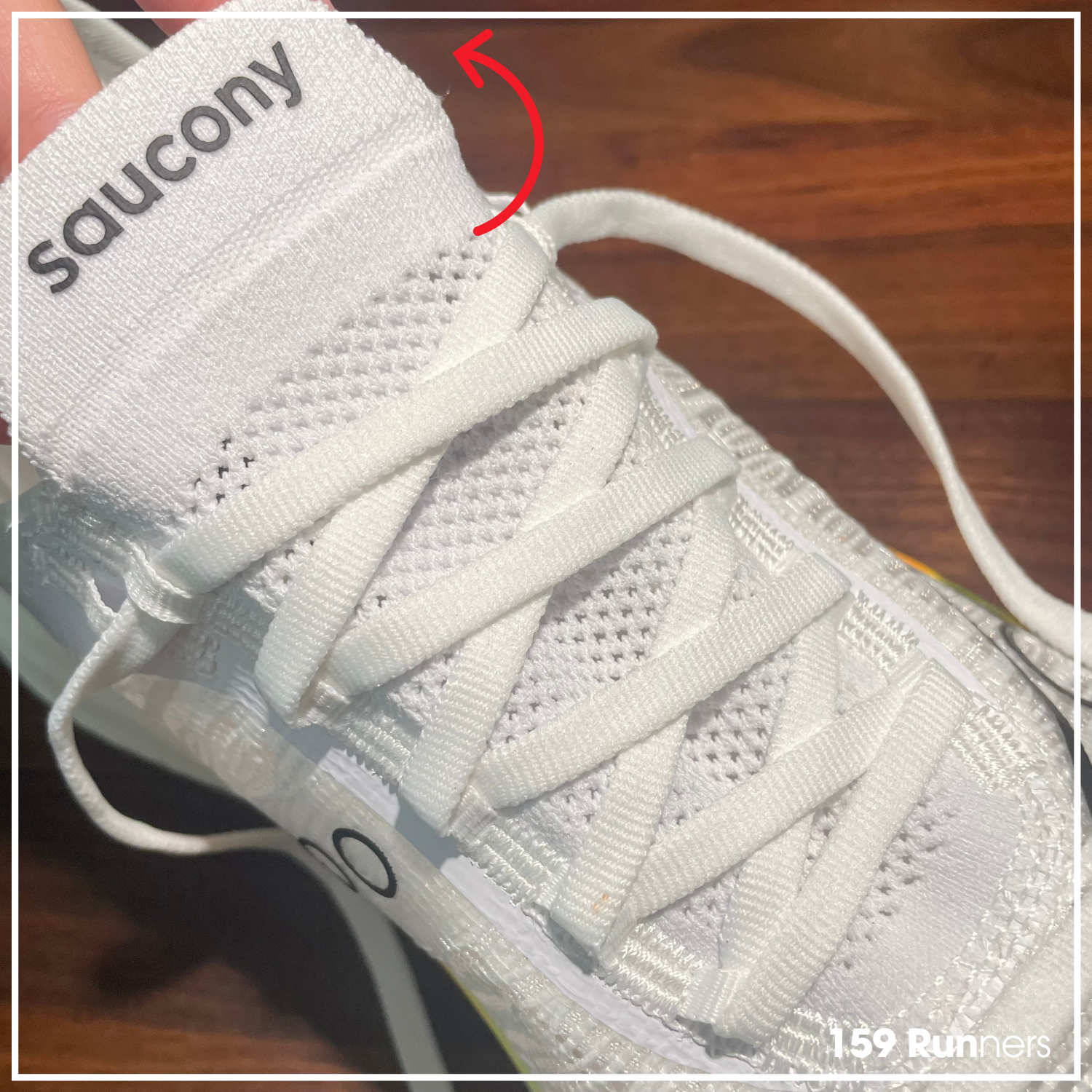
However, the thin upper does have some drawbacks, particularly if you run in the rain. It absorbs water easily, and the stiff toe guard may feel uncomfortable if the sizing is off or you don’t wear thick socks. Overall, though, it’s a well-fitted upper that’s perfect for racing.

Tongue & Lacing System: The tongue is a flat-knit material integrated with the upper, so it doesn’t shift around during runs, helping your foot stay in place. It has good flexibility and snugly hugs the back of the foot without pressing too hard even if you lace tightly. A unique feature is that you can fold the tongue up or down, depending on how you lace: down for regular lacing or up to avoid pressure from the laces when using a runner’s loop.
The laces themselves have slight stretch, providing a secure but not tight feel. They are a bit plain compared to the shoe’s price, and some might prefer a more premium-textured lace for added confidence on race day.
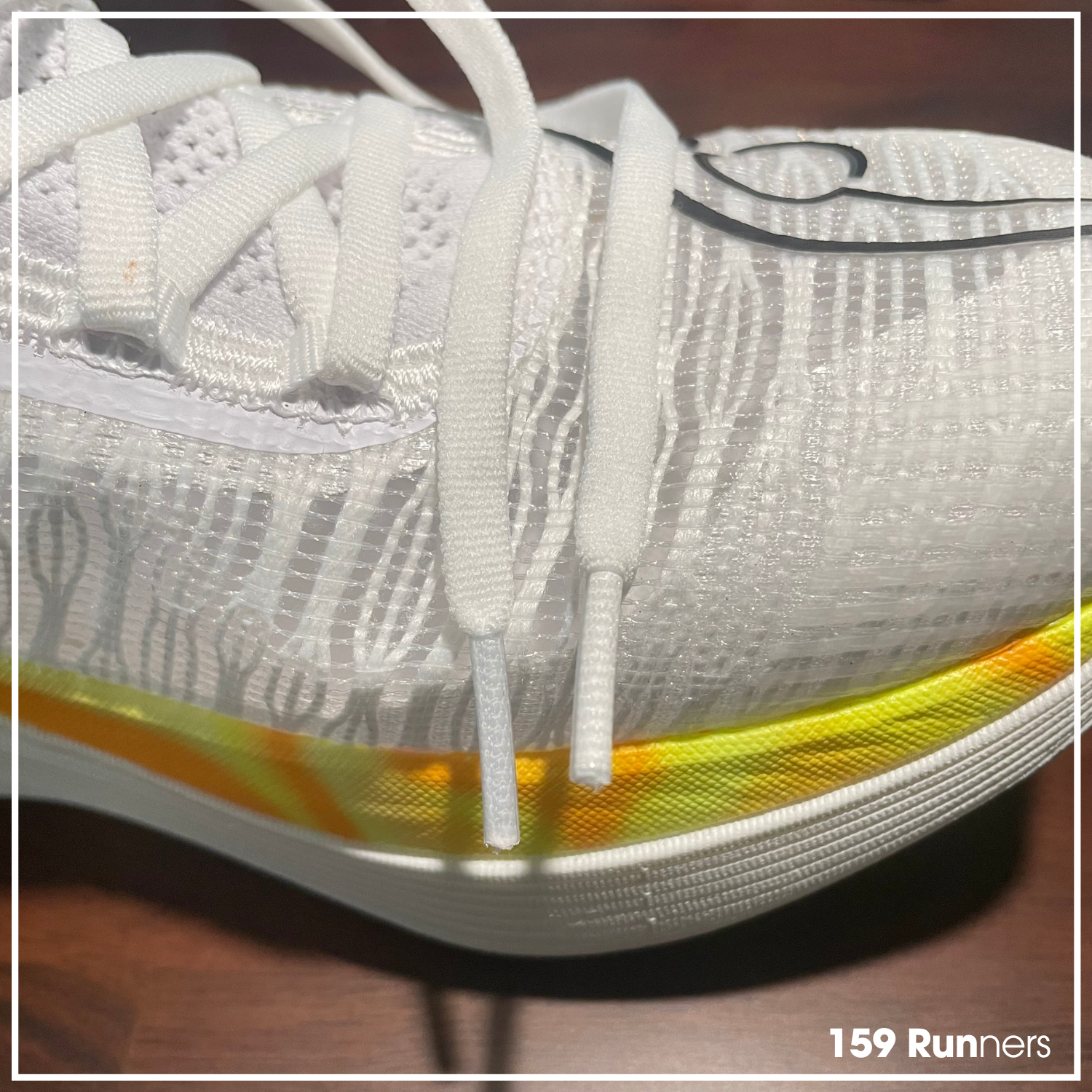
Heel Cup: The heel cup is softer than most shoes and lacks a traditional stiff heel counter, which is great for those with sensitive heels. The curved, flexible material helps reduce irritation, and the fit locks in the heel without sliding. Though there’s no thick padding, it fits snugly and securely. Some might find this heel cup doesn’t fit their foot perfectly, but for many, it will be one of the most loved features of the shoe.

Toe Box & Midfoot Fit: The fit is snug like most racing shoes, but the toe box is quite narrow, which may be uncomfortable for some, especially those with sensitive pinky toes or who prefer more room. While the midfoot and forefoot are roomy enough, the front end of the shoe narrows down noticeably. If you plan on running long distances (21–42K), I recommend going half a size up.
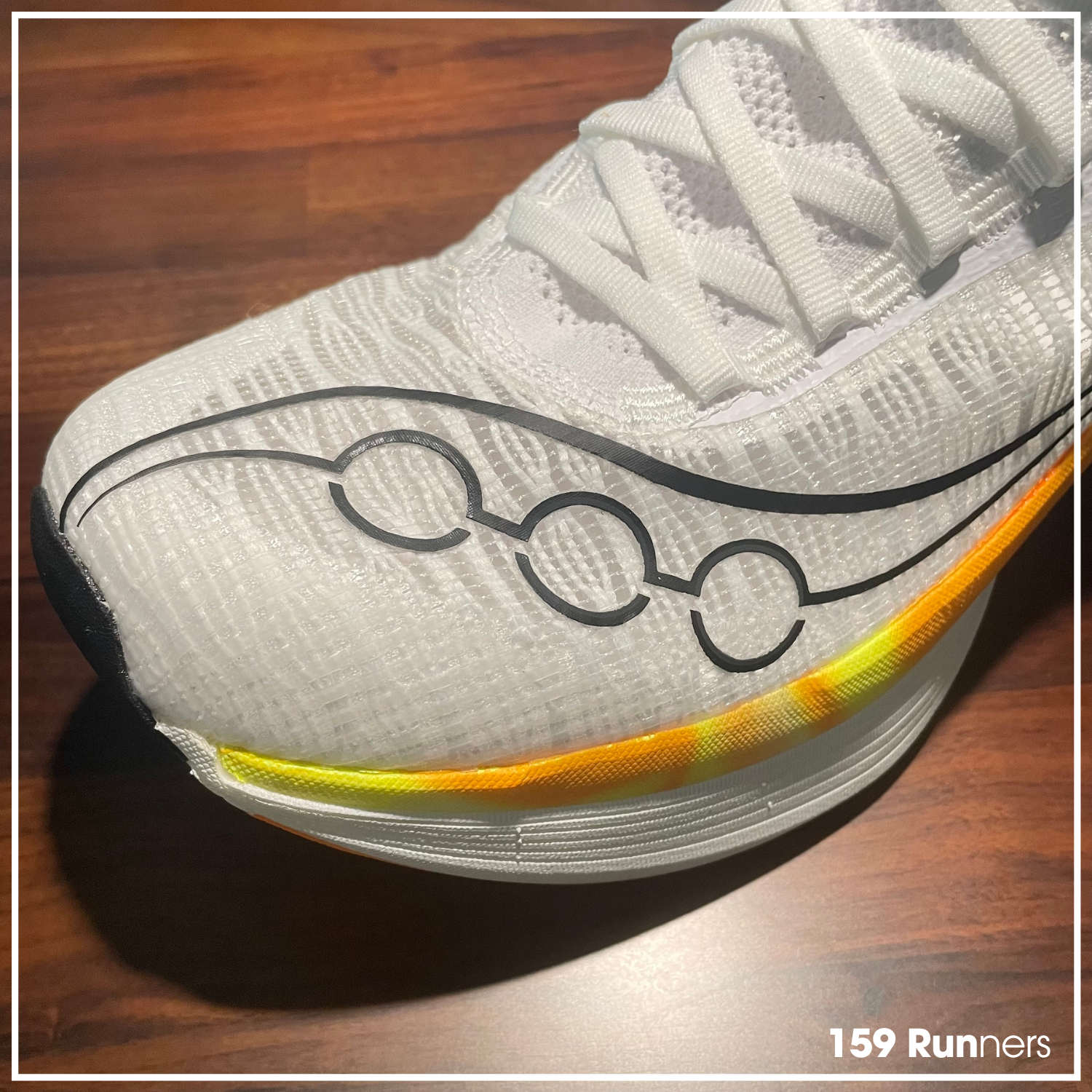

Midsole: The IncrediRun foam is a huge change from the previous model. This TPEE foam feels incredibly soft and bouncy at first touch, almost like jelly or marshmallows. As you run, it provides immediate bounce, helping propel you forward. This foam doesn’t just feel comfortable; it has a return force that allows you to maintain speed without feeling sluggish, unlike softer foams from other brands.
IncrediRun adapts to different paces: it’s soft and bouncy during warm-ups but becomes firmer and more powerful as you increase speed. This gives you a stable and speedy ride, even in races at a steady pace, while preventing fatigue during long-distance running.
The technology works well with the Speedroll mechanism, providing smooth, seamless foot movement, which makes it an interesting choice for runners looking for both comfort and speed in races without worrying about impact.
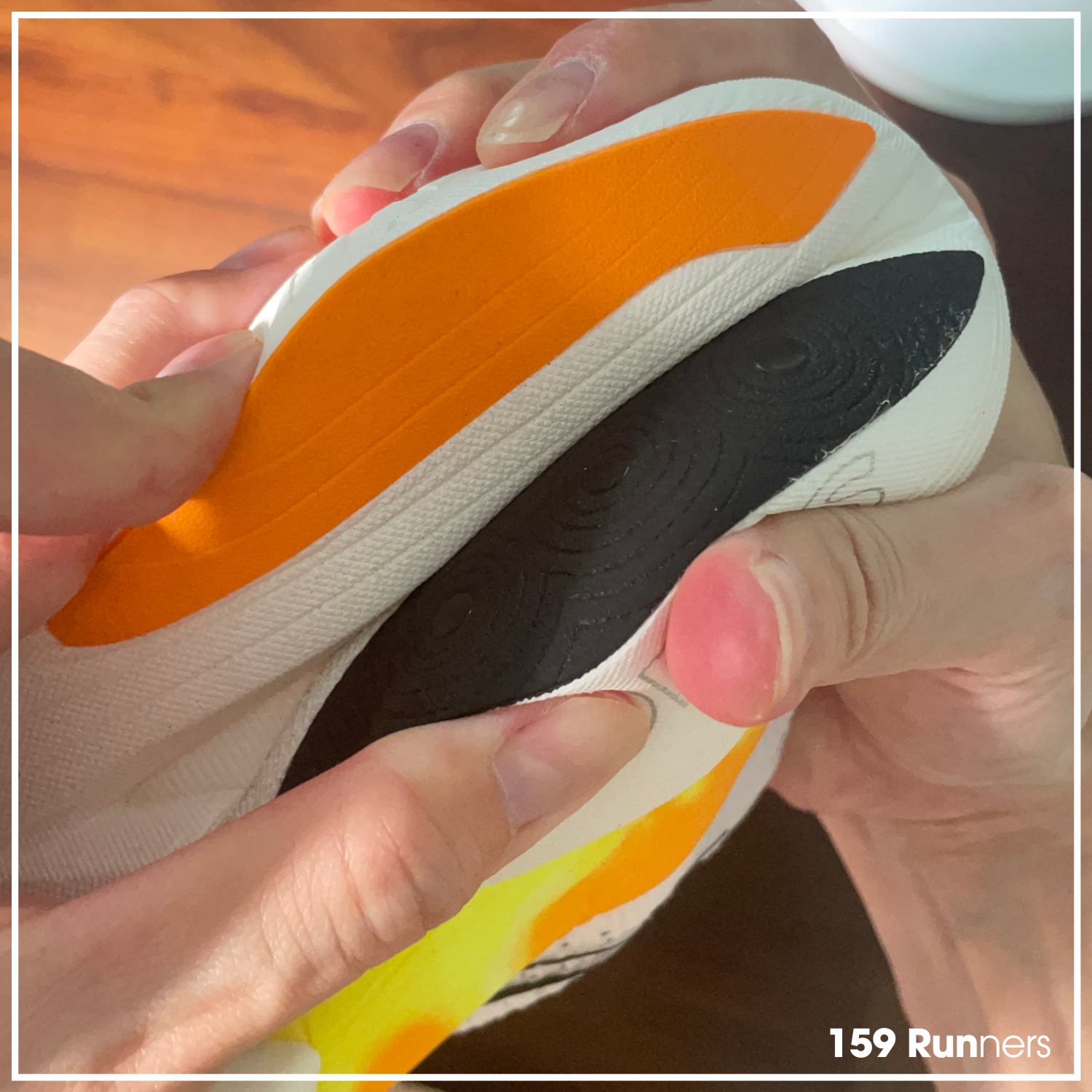
Carbon Plate: The carbon plate is more flexible than the previous version, using a slotted design that makes the shoe feel smoother and more natural when running. The Speedroll rocker works in tandem to propel the foot forward, creating a continuous, smooth transition, making pace increases much easier without being too aggressive.
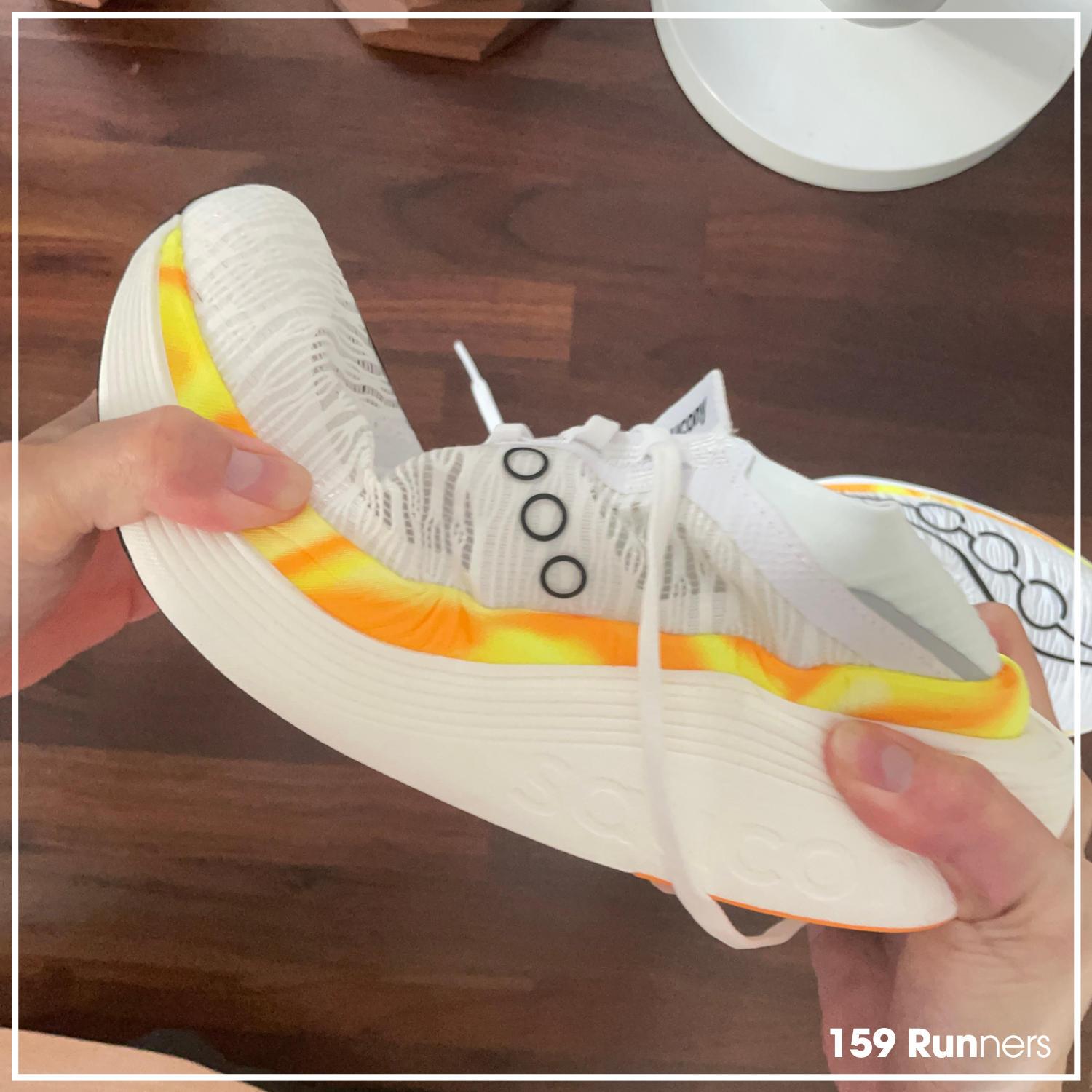
Ride & Performance
Ride & Feel: I find the Saucony Endorphin Elite 2 best for forefoot to midfoot strikers. Heel striking is a definite no-go. The transition feels slow, and the bounce doesn’t kick in right away, mainly due to the overly soft foam. Initially, it feels more like a supportive trainer than a racer—insanely comfortable but lacking aggression. There’s no immediate “pop,” just tons of bounce with a sweet, relaxed vibe. 😻 Surprisingly, my heart rate (HR) stayed lower than usual (I thought I’d gotten fitter, but it was the shoe!).
At slower paces or while standing/walking, the softness makes it feel wildly unstable. But at faster paces (5:30/km or quicker), it comes alive, with stability improving (though not as much as I’d like). Post-run fatigue is noticeably lower, and HR rises more slowly than with other shoes. 😱
However, during interval training or explosive sprints, it’s a letdown. 🫠 The foam feels too soft, wobbling underfoot, and lacks the snappy response needed for quick pace changes or sprints. It’s not an aggressive, instant-response shoe but excels at steady, flowing paces, keeping legs fresh. It’s terrible for track intervals, especially on rubber tracks—too soft and wobbly to push hard. But for steady race paces, it’s phenomenal, with superb bounce and response. 🤩
The magic comes from IncrediRun’s propulsive bounce and silky-smooth transitions. After multiple sessions, I adapted to the softness and instability, and it became addictive. 😘 It’s now one of my top 3 racing shoes globally, despite its stability issues. For runners with strong form who love a plush, bouncy ride and can handle the wobble, you’ll adore the Elite 2! 😍
Responsiveness: The responsiveness is relatively mild, or sometimes hardly noticeable at all, likely due to the foam’s softness covering up the plate’s bounce.
Rocker: The rocker is smoother and more natural than the original, not aggressively propelling you forward but blending bounce with a flowing, effortless roll. Runners who like a relaxed, smooth ride will love it.
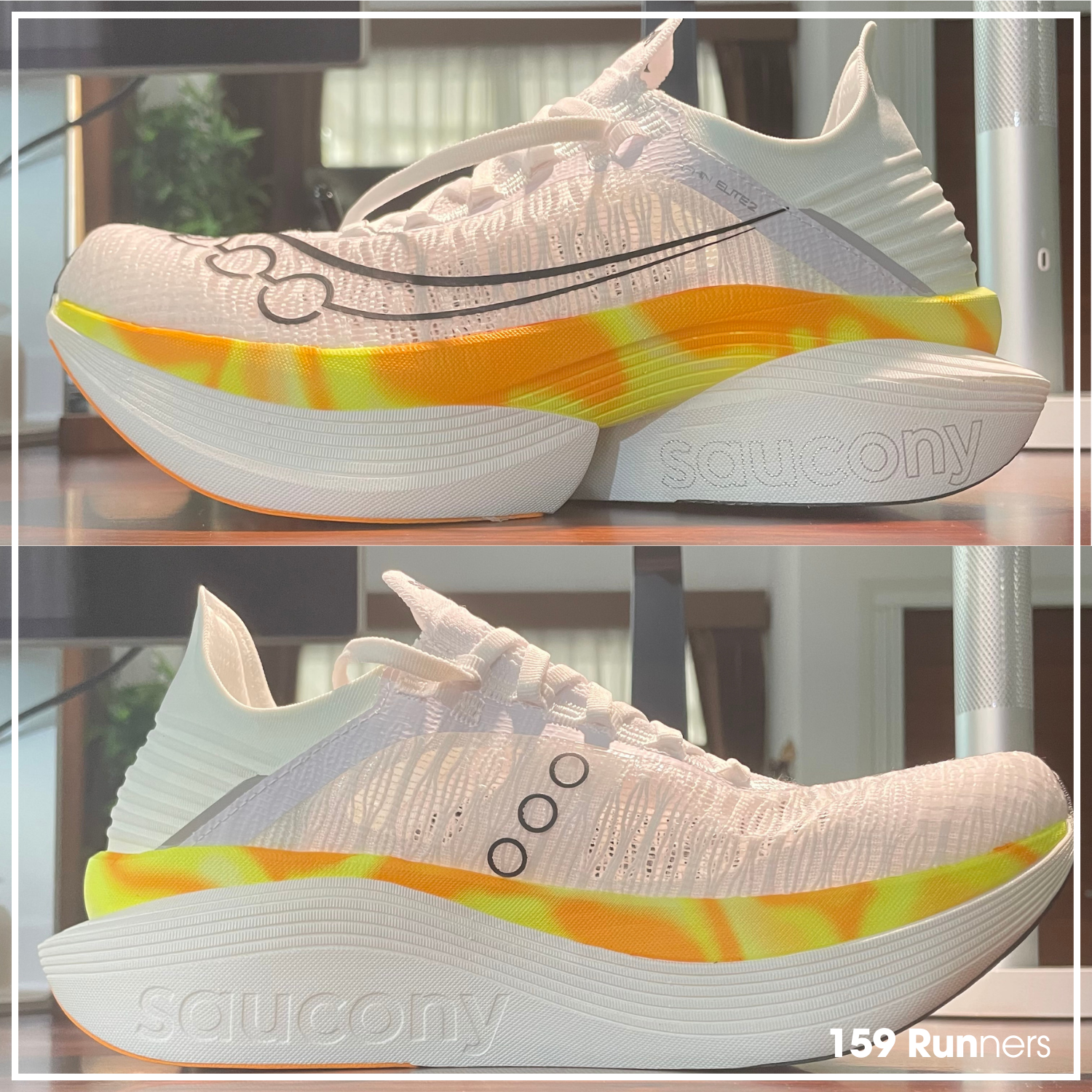
Breathability: Excellent, rated 5/5. The knit-mesh upper provides superb ventilation, even though the heel and tongue can absorb water in wet conditions.
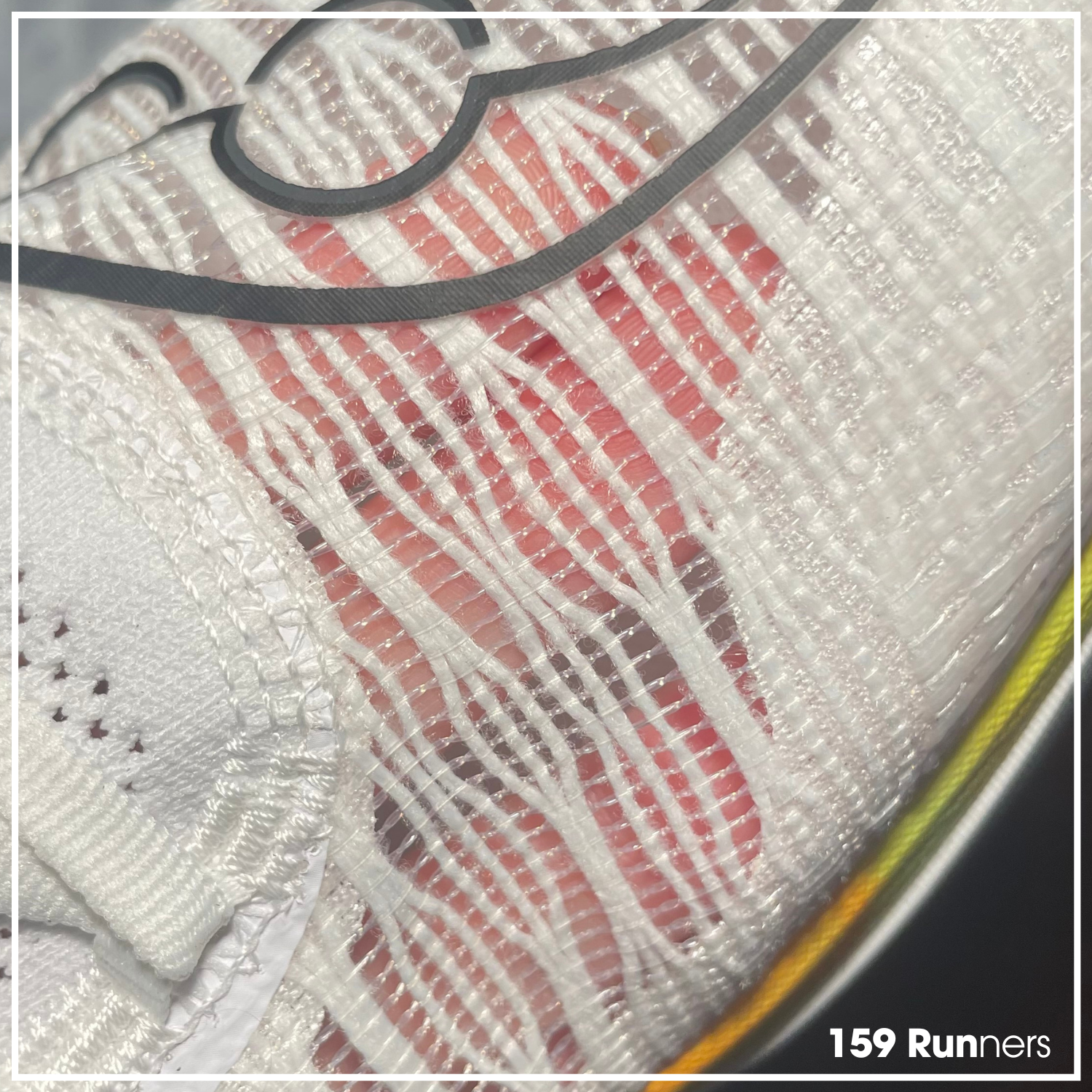
Stability: Stability is a concern here. (1-3/5 depending on your form) This might be the least stable shoe I’ve worn, especially for heel strikers or runners with weak ankles or those who often lose form.
Tight corners or synthetic tracks make the instability even more noticeable. The soft foam and high stack height can make it feel insecure during sharp turns or hard landings.
The upper’s side support is also weak, allowing slight lateral foot movement. At steady, fast paces on straight roads, it’s manageable, especially for forefoot strikers.
Grip: Overall, The PWRTRAC outsole grips well on dry and wet roads, even in light rain. Some report slipperiness on very wet surfaces—possibly due to a thin film on new outsoles.
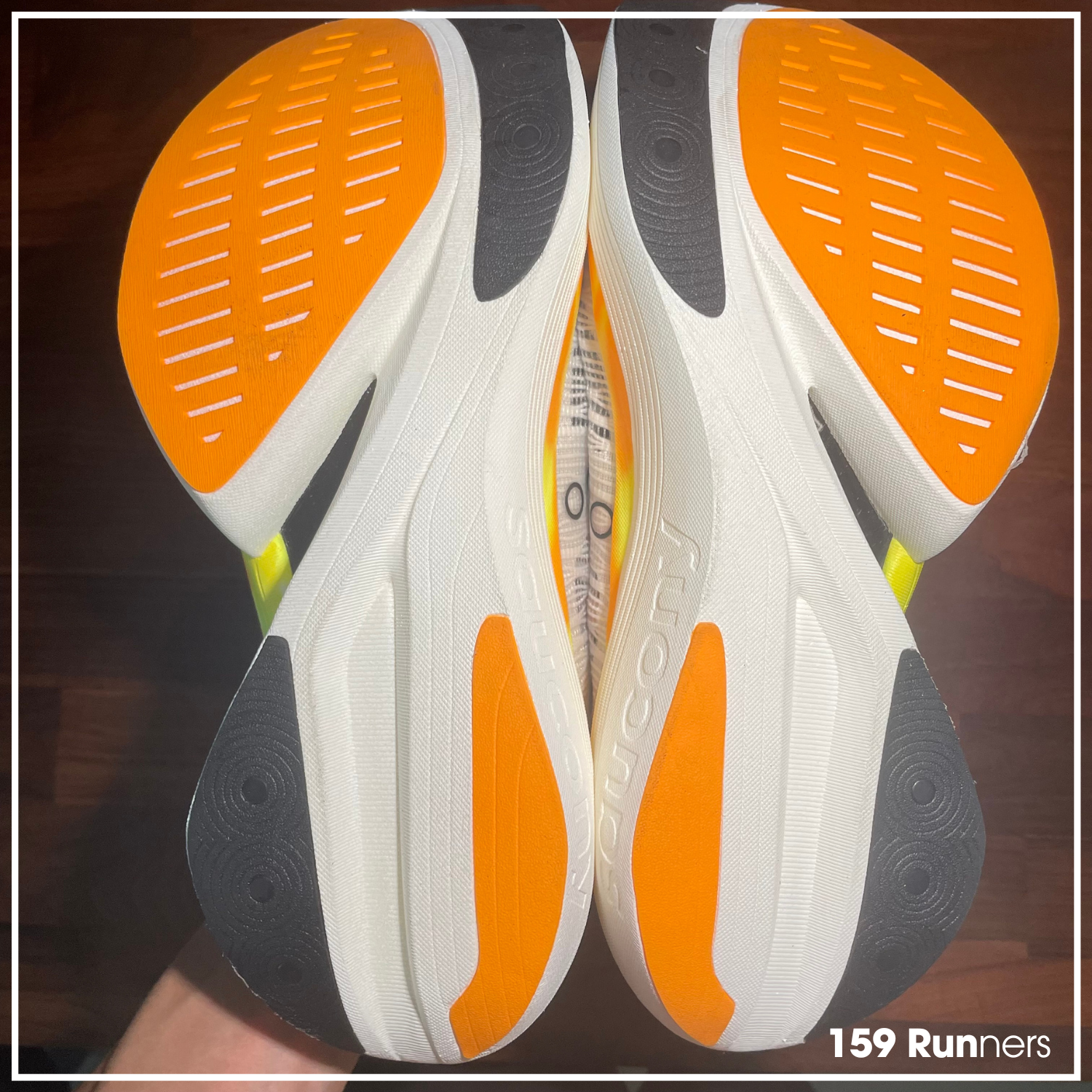
Outsole Durability: The PWRTRAC outsole is surprisingly durable (4/5). After 100+ km, it shows minimal wear, outperforming the Nike Vaporfly 4, which wore significantly by 50km. For racing and tempo runs, it’s built to last. Heavy heel strikers may see faster wear in exposed foam areas.
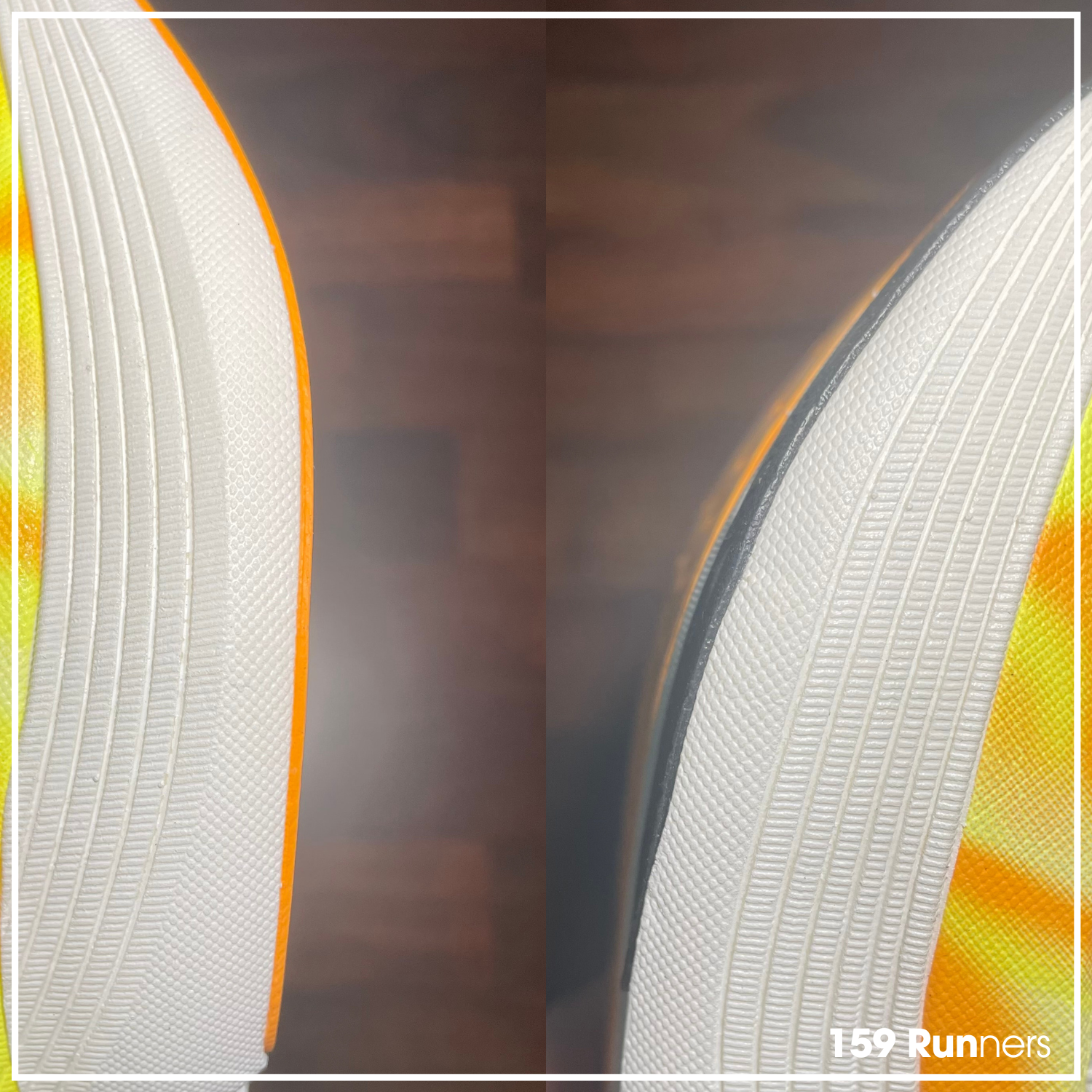
Overall Performance: The best racing shoe I’ve tested to date—my current No. 1.
Ideal Distances: Suitable for 10K to marathon (42K), but it shines brightest at half-marathon (21K). For 42K, you need solid form to avoid heel striking when fatigued. Best for tempo sessions on flat, straight roads; otherwise, it’s race-day only.
Comparison with Other Models
Vs. XTEP 160X 3.5 PRO: The Elite 2 edges out the formidable XTEP in energy efficiency, with less fatigue and fresher legs. Tested at 5:00, 4:00, and 3:30/km, the Elite 2 excels here, though XTEP feels bouncier, rolls better, and is more versatile. (See detailed comparison on my page.)
Note: XTEP 160X 3.5 PRO reportedly outperforms Nike Vaporfly 4 and Adidas Adios Pro 4, which beat many others (VF2, VF3, AF3, etc.). Thus, the Elite 2 likely surpasses these models too.
Vs. Endorphin Elite 1: The Elite 2’s new foam is softer and bouncier, with a more flexible plate, creating a smoother but seemingly slower feel (though it likely performs better). The original had stiffer plates, better rocker, and greater stability. The new model is slightly lighter (199g vs. 204g).
Vs. Adidas Adios Pro EVO 1: Overall Performance at 4:00/km Pace to Exhaustion. I’d give the SAUCONY Endorphin Elite a slight edge over the ADIDAS Adios PRO EVO1. 🔥 Read the full in-depth review of 👉 SAUCONY Endorphin Elite 2 vs ADIDAS Adios PRO EVO1
Who Is the Saucony Endorphin Elite 2 For?
- Runners seeking a top-tier racing shoe with unmatched energy efficiency for 10-42K races, especially half-marathons (21K). Ideal for tempo or race-pace sessions on flat, straight roads.
- Speed-focused runners who love an ultra-plush, bouncy ride with great fit, comfort, durability, and top-notch breathability. Recommended for paces faster than 5:30/km (slower feels unstable).
- Forefoot to midfoot strikers with consistent, strong form, stable ankles, and natural running mechanics (no overpronation).
Who Should Avoid It?
- Heel strikers or runners who heel strike when fatigued.
- Runners with overpronation, the Saucony Endorphin Elite 2 may not be suitable
- Those needing a versatile shoe for varied training sessions—it’s race-day only.
- Runners planning track intervals (100-400m) on rubber tracks—it’s wildly unstable and lacks snap for sprints.
Pros
- IncrediRun foam: Uniquely plush and bouncy, with excellent energy return, keeping legs fresh and HR low.
- Top-performing super shoe in our reviews. 🔥
- Lightweight, with a stellar upper—comfy, breathable, and a versatile tongue design. Heel fit is outstanding (no issues with heel striking).
- Durable outsole with great grip on wet and slippery surfaces.
Cons
- Design isn’t standout (subjective).
- Severely unstable, especially at slow paces or during fast intervals. Takes adjustment to handle the softness.
- Not for heel striking—slow transitions and feels sluggish.
- Unsuitable for standing, walking, general training (slow runs, long runs, intervals, or high-speed sprints).
- Lacks snap for sprints (tested at 2:30-2:55/km paces).
- Other issues: Waterlogged in rain, narrow toe box requires sizing up.
Test Context & Disclosure
- Acquisition: Purchased firsthand from a running shoe retailer.
- Tester Profile: 56kg, 171cm, cadence 188-195, forefoot striker, PB 1:21:32 (21K).
- Testing Methodology: Performance tested via treadmill intervals (Garmin FR 965, Garmin HRM Pro+, Stryd Duo, Runn Smart Treadmill Sensor). Ride feel tested on roads and rubber tracks at paces of 6:00, 5:00, 4:00, 3:50, 3:30, and 3:00/km. Total test distance: 172km. (See latest comparison post for details.)
- Limitations: This review reflects personal opinions and experiences. Results may vary based on speed, body weight, stride, foot strike, and testing methods.

